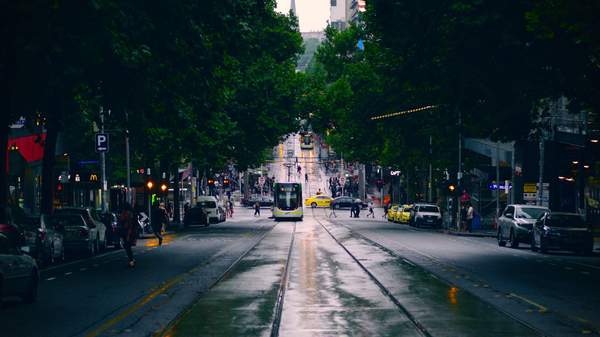Overview
Between the hectic traffic, overcrowded tram stops, the clogged-up footpaths and all the construction going on at the moment, Melbourne's CBD can sometimes feel like a big pile of stress. But things are (hopefully) changing. For one, the new Metro Tunnel project will be finished by 2025, bringing a new underground line and five new stations to help people get in and out of the CBD. And now, the City of Melbourne has released a draft ten-year plan designed to reduce city congestion by shifting the focus to pedestrians and cyclists.
Many of the proposed changes in the Draft Transport Strategy 2030 revolve around reducing cars in the CBD and encouraging more people to travel by either foot, public transport or two wheels. The strategy focuses mainly on making it safer and more enjoyable to walk or ride around the city by removing cars off some streets and building more protected bike lanes.
So what could the changes mean for you? Here are a few things Lord Mayor Sally Capp and the City of Melbourne want to put into play.
- Turning a heap of public roads and on-street parking spaces into pedestrian walkways, cycling paths, trading areas and green space. About the equivalent of 20 Bourke Street Malls would be transformed.
- Keeping as many cars as possible out of the CBD. This would mean traffic simply passing through the city would be kept out of the grid and encouraged to use alternative routes.
- Prioritising pedestrians in the CBD's Little streets and laneways, by dropping speed limits, making it easier and safer to walk around. There are also plans to expand Swanston Street's 30km/h zone to other streets in the grid.
- Adding around 44 kilometres of new protected bicycle lanes running through the CBD by 2030. The current network totals around six kilometres, so this would take it up to 50. This would aim to increase the feeling of safety and get more people to take up cycling.
- Improving the areas around public transport hubs, with wider footpaths, better streetscapes, additional train station exits and more green spaces.
- Increase footpath space by creating 300 more on-street motorcycle parks.
These changes would ideally complement the Metro Tunnel and proposed Suburban Rail Loop public transport projects currently being undertaken by the State Government. They're actions that seem necessary seeing as Greater Melbourne will more than double its population in the next 30 years.
Of course, none of this is set in stone just yet. The draft strategy will go before Councillors at the Future Melbourne Committee next week and, if given the go-ahead, will then go on public display until for six week where you can submit your thoughts and concerns. We'll let you know what happens next.
